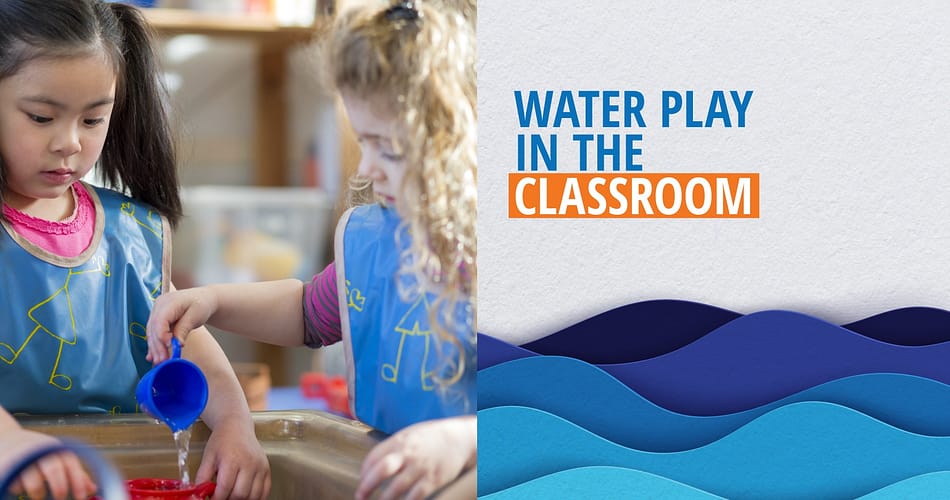Offering water play in the classroom and outdoors provides an engaging way to introduce science and math concepts. It provides opportunities for problem-solving, creative thinking and practicing social skills and language development. As with any type of activity, offering variety can create renewed interest and support children’s learning. Here are ways to make the most of water play with the children in your care.
Create variety with new materials
Add variety to the water table by adding food coloring, bubbles, ice cubes or offering different natural materials such as flowers, stones and pieces of wood for children to explore and experiment with.*
*Safety Tip: Be mindful of the size of the materials added to the water table to avoid potential choking hazards, especially with toddlers or young preschoolers who explore by putting items in their mouths.
Provide open-ended materials for children to collect and route water through, such as funnels, tubes, PVC pipes and plastic rain gutters. Add these materials to your outdoor space along with a water source such as a hose, water faucet or water table.
Support learning through dramatic play
Set up a car wash for engaging dramatic play outdoors. Provide buckets of soapy water, sponges and towels for the children to use to wash their tricycles, bikes and ride-on cars. Encourage the children to work together to identify the different jobs for the workers at the car wash. Support literacy skills by encouraging the children to make signs to advertise the car wash and embed math concepts by providing a cashier’s station with play money.
Promote scientific inquiry using water
Activities involving water lend themselves naturally to the process of scientific inquiry. For example, provide opportunities to explore with ice. As the children explore and observe the properties of ice, and ice melting, prompt the children’s thinking by asking them questions. Your questions could be about making predictions, such as where they think ice will melt faster; in the water table, on a tray in the classroom, or in a bucket outdoors. Chart the children’s hypotheses and encourage them to observe the ice melting and record their data. After this initial observation, encourage the children to analyze their data to form conclusions about what caused the ice to melt faster or slower. Support the children in using this analysis to form new research questions and engage further in the process of inquiry, hypothesis, investigation, analysis and communication about their findings.
Provide experiences for the littlest learners to explore
With careful planning and close supervision, infants and young toddlers can benefit from water play, too. Prepare a small amount of water in a shallow bowl or cookie sheet, add a few floating objects to explore with, and you’ve got an engaging activity for infants. Even a small amount of water in a high-chair tray creates a great surface for baby to explore the sensations of water. Provide water play activities for infants and toddlers only when you can provide your undivided attention to ensure their safety. Remember to never leave children unsupervised around water as drowning can happen in just a few inches of water.
How do you support children’s learning through water play? We’d love to hear about it! Send us an email at QualityFirst@FirstThingsFirst.org.
